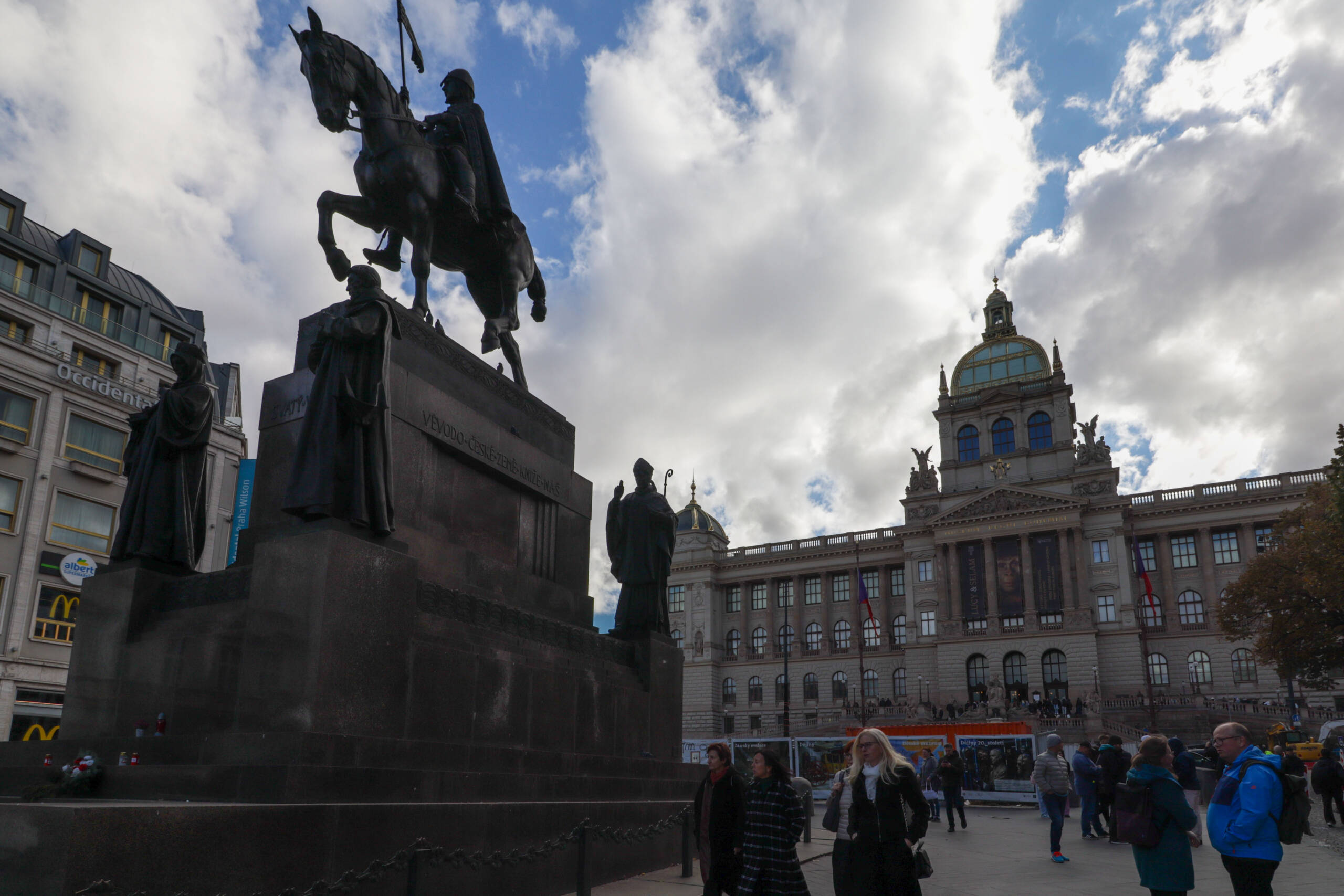There’s something surreal about standing at the foot of Saint Wenceslas’ statue on his proud horse, flanked by saints, while the backdrop is divided between the domed majesty of the National Museum and the bright, tacky glow of fast-food logos plastered on modern façades. The whole square feels like a theater where history is constantly interrupted by commerce, and the contrast is almost too sharp to ignore. You look up at Wenceslas, a medieval duke immortalized in bronze, watching over the city with eternal vigilance, and then a quick glance to the left reminds you that Big Macs are sold just across the street.

Shot with Canon R100
The sculpture itself, massive and commanding, seems to resist the passing of time. It has seen empires rise and collapse, Soviet tanks roll through, Velvet Revolution crowds march defiantly, and today—just tourists with selfie sticks, students passing by, and bundled-up pedestrians rushing to somewhere else. Beneath him, the saints’ figures are stern, shadowy, and slightly intimidating, their dark bronze almost blending with the overcast sky. You can almost imagine them whispering about morality and sacrifice while a couple in neon sneakers pose for a group photo in front of them.
The museum across the square provides a counterweight. Its domed roof shines faintly under the patchy sunlight that breaks through restless clouds. Flags hang from its façade, a reminder that this building is not just architecture but also a symbol of Czech identity. Yet the crowd in front of it is more interested in food stalls and tram schedules. Perhaps that’s the irony of the place: history is always present, but daily life insists on moving forward, indifferent and hungry.
It’s a place of contradictions. Grandiosity and mundanity, martyrdom and convenience, revolution and routine. And that’s precisely what makes it feel alive. If Wenceslas could somehow dismount his horse and walk the square, maybe he’d find it strange that his memory has to compete with McDonald’s signs and shopping bags. Or maybe he’d shrug, realizing that every generation leaves its marks—some carved in stone, others printed on disposable cups.
Leave a Reply